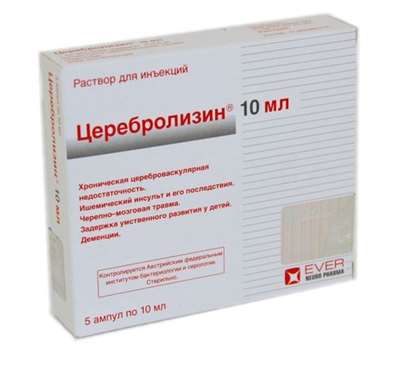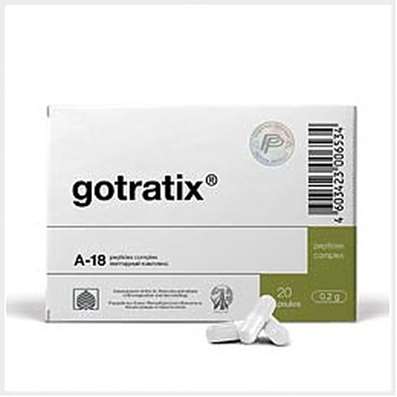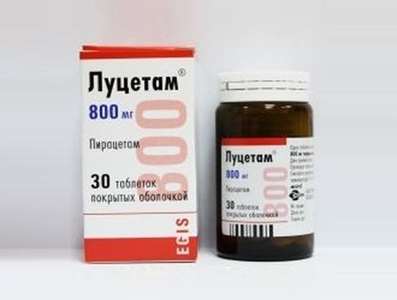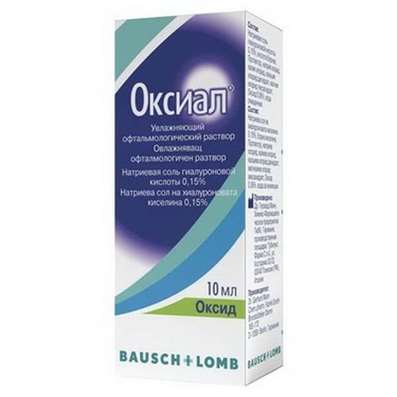Instruction for use: Dicloberl N 75
I want this, give me price
Active substance Diclofenac
ATX Code M01AB05 Diclofenac
Pharmacological group
NSAIDs - Acetic acid derivatives and related compounds
Nosological classification (ICD-10)
M00-M25 Arthropathy
M05 Seropositive rheumatoid arthritis
Rheumatoid arthritis seropositive
M10 Gout
Exacerbation of gout, Acute articular attack with gout, Acute gouty attack, Gouty attack, Recurrent gout attacks, Chronic gout
M15-M19 Osteoarthritis
M45 Ankylosing spondylitis
Ankylosing spondylarthrosis, Marie-Strumpel disease, Ankylosing spondylitis, Pain syndrome in acute inflammatory diseases of the musculoskeletal system, Pain syndrome in chronic inflammatory diseases of the musculoskeletal system, Bechterew's disease, Ankylosing spondylitis, Diseases of the spinal column, Rheumatic spondylitis, Bechterew-Marie-Strumpel disease
M47 Spondylosis
Spondyloarthrosis, spondylarthrosis, Diseases of the spinal column, spondylosis
M79.0 Other unspecified rheumatism
Degenerative rheumatic disease, Degenerative and rheumatic diseases of the tendons, Degenerative rheumatic diseases, Localized forms of rheumatism of soft tissues, Rheumatism, Rheumatism with a pronounced allergic component, Rheumatism of the articular and extraarticular, Rheumatic attack, Rheumatic complaints, Rheumatic diseases, Rheumatic disease of the spine, Relapses of rheumatism, Articular and extra-articular rheumatism, Articular and muscular rheumatism, Articular rheumatism, Articular syndrome with rheumatism, Chronic rheumatic pain, Chronic articular rheumatism, Rheumatoid diseases, Rheumatic diseases of the intervertebral disc
R52.1 Constant unrestrained pain
Pain syndrome in oncology practice, Pain syndrome pronounced, Pain syndrome in malignant neoplasms, Pain syndrome in cancer, Pain syndrome with tumors, Pain syndrome in cancer patients, Pain in malignant neoplasms, Pain in malignant tumors, Pain in tumors, Pain in cancer patients, Pain in bone metastases, Pain in cancer, Malignant pain syndrome, Intensive chronic pain, Intensive pain syndrome, Intensive non-curable pain syndrome, Intensive chronic pain syndrome, Unrestrained pain, Unrestrained pain, Tumor pain, Post-traumatic pain syndrome, Severe pain, Chronic pain, Chronic Pain Syndrome
R52.2 Other constant pain
Pain syndrome, rheumatic origin, Pain at vertebral lesions, Pain in the chamber, Pain for burns, Pain syndrome weak or moderate, Perioperative pain,Moderate to severe pain, Moderately or weakly expressed pain syndrome, Moderate to severe pain, Ear pain of otitis, Neuropathic pain, neuropathic pain
T08-T14 Injuries to unspecified part of trunk, limb or body region
Z100 * CLASS XXII Surgical practice
Abdominal surgery, adenomectomy, Amputation, Coronary angioplasty, Angioplasty of the carotid arteries, Antiseptic skin treatment for wounds, Antiseptic Hand, Appendectomy, atherectomy, Balloon coronary angioplasty, Vaginal hysterectomy, The coronary bypass, Interventions in the vagina and cervix, Interventions on the bladder, Intervention in the mouth, Restoration and reconstructive surgery, Hand hygiene of medical personnel, Gynecologic surgery, Gynecological intervention, Gynecological surgery, Hypovolemic shock during operations, Disinfection of purulent wounds, Disinfection of wounds edges, Diagnostic intervention, Diagnostic procedures, Cervical Diathermocoagulation, Long-surgery, Replacing the fistula catheters, Infection in orthopedic surgery, Artificial heart valve, cystectomy, Short-term outpatient surgery, Short-term operation, Short surgical procedures, Krikotireotomiya, Blood loss during surgery, Bleeding during surgery and in the postoperative period, Kuldotsentez, laser photocoagulation, laser coagulation, retinal laser coagulation, Laparoscopy, Laparoscopy in Gynecology, CSF fistula, Small gynecological operations, Small surgical procedures, Mastectomy and subsequent plastic, mediastinotomy, Microsurgical operations on the ear, Mukogingivalnye operation, suturing, Minor surgery, neurosurgical operation, Immobilization of the eyeball in ophthalmic surgery, testectomy, pancreatectomy, Perikardektomiya, The period of rehabilitation after surgery, The period of, convalescence after surgery, Percutaneous transluminal coronary angioplasty, Pleural thoracentesis, Pneumonia postoperative and posttraumatic, Preparation for surgical procedures, Preparation for surgery, Preparation of the surgeon's hands before surgery, Preparation of the colon for surgical procedures, Postoperative aspiration pneumonia in neurosurgical and thoracic surgery, Postoperative nausea, Postoperative bleeding, postoperative granuloma, postoperative shock, The early postoperative period, myocardial revascularization, Radiectomy, gastric Resection, bowel resection, uterine Resection, liver Resection, enterectomy, Resection of part of the stomach, Reocclusion of the operated vessel, Bonding tissues during surgical procedures, Removal of sutures, Condition after eye surgery, Condition after surgery, Condition after surgery in the nasal cavity, Condition after gastrectomy, Status after resection of the small intestine, Condition after tonsillectomy, Condition after removal of the duodenum, Condition after phlebectomy, Vascular surgery, Splenectomy, Sterilization of surgical instruments, Sterilization of surgical instruments, sternotomy, Dental surgery, Dental intervention in periodontal tissues, strumectomy, Tonsillectomy, Thoracic surgery, total gastrectomy, Transdermal intravascular coronary angioplasty, Transurethral resection, Turbinektomiya, Removal of a tooth, cataract surgery, Removal of cysts, tonsillectomy, Removal of fibroids, Removing the mobile primary teeth, Removing polyps, Removing broken tooth, Removal of the uterus body, Removal of sutures, Urethrotomy, Fistula likvoroprovodyaschih ways, Frontoetmoidogaymorotomiya, Surgical infection, Surgical treatment of chronic limb ulcersm, Surgery, The surgery in the anal area, The surgery on the colon, Surgical practice, The surgical procedure, Surgical interventions, Surgery on the gastrointestinal tract, Surgical procedures on the urinary tract, Surgical procedures on the urinary system, Surgical intervention of the genitourinary system, Surgical procedures on the heart, Surgical manipulation, surgery, Surgery on the veins, Surgical intervention, Vascular surgery, Surgical treatment of thrombosis, cholecystectomy, Partial gastric resection, transabdominal hysterectomy, Percutaneous transluminal coronary angioplasty, Percutaneous transluminal angioplasty, Coronary artery bypass, tooth Extirpation, Extirpation of milk teeth, pulpectomy, pulsative cardiopulmonary bypass, tooth Extraction, teeth Extraction, cataract extraction, Electrocoagulation, endourological intervention, episiotomy, Etmoidotomiya, Complications after tooth extraction
Composition and form of release
1 ampoule with 3 ml solution for injection contains diclofenac sodium 75 mg; in the box 5 pcs.
pharmachologic effect
Pharmacological action - anti-inflammatory, antipyretic, analgesic.
It inhibits the cyclooxygenase involved in the metabolism of arachidonic acid, blocks the synthesis of PG (prostaglandins).
Pharmacodynamics
The anti-inflammatory effect is due to interference in various parts of the pathogenesis of inflammation: in addition to the main antiprostaglandin effect, normal permeability, microcirculation processes are normalized, the influence of histamine, bradykinin and other mediators of inflammation decreases; the formation of ATP is inhibited, the energy of the inflammatory process decreases, etc. Analgesic properties are due to the ability to weaken the algogenicity of bradykinin, antipyretic - a calming effect on the altered excitability of the heat-regulating centers of the intermediate brain under the influence of the pathological process.
Pharmacokinetics
After oral administration, it is completely absorbed. Cmax in plasma is achieved after 1-16 hours (with IM injection - after 10-20 minutes, with rectal - after about 30 minutes). When administered orally, 35-70% enters the blood in unchanged form (after passing the liver). Binding to plasma proteins is about 99%. T1 / 2 - 2 hours. Approximately 30% is excreted from the body in the form of metabolites by the intestine. About 70% is metabolized in the liver and is excreted through the kidneys in the form of inactive derivatives.
Indications
Arthritis (rheumatoid, polyarthritis, gout attacks); ankylosing spondylitis (Bechterew's disease) and other rheumatic diseases of the spine, degenerative diseases of the joints and spine (arthrosis, spondyloarthrosis), rheumatic soft tissue damage, painful swelling and inflammation after trauma or surgery. Acute pain syndrome in the cases listed above (injections).
Contraindications
Hypersensitivity, hemopoiesis of unexplained etiology, stomach and duodenal ulcer, porphyria induced, bronchial asthma, children and adolescence (up to 18 years).
pregnancy and lactation
Not recommended in the first six months of pregnancy, contraindicated in the last trimester (possibly inhibition of labor, premature closure of the arterial Botallus duct, increased tendency to bleeding in the mother and child, intensive formation of edema in the mother). Should be avoided during the period of breastfeeding (passes into the milk of the mother).
Side effects
NVP-gastropathy, gastric and intestinal ulcers, bloody vomiting, bloody stools or diarrhea, headaches, dizziness, irritation, irritability, weakness, deafness, violation of sensitivity and taste, visual disturbance, tinnitus, hearing, memory disorientation, fear , nightmares, tremors, depression, symptoms of aseptic meningitis, alopecia, eczema, erythema, blister rashes, photosensitivity, small-spotted skin hemorrhages, Stevens-Johnson syndrome, Lyell syndrome, renal dysfunction atochnost, proteinuria, hematuria, transient elevation of liver enzymes, hepatitis, isolated cases of changes in glycemia level, anemia, leukopenia, agranulocytosis, thrombocytopenia, pancreatitis, edema, palpitations, false angina, hypertension, allergic reactions (rash, pruritus, urticaria); local reactions (for candles): irritation, spotting of mucus, painful defecation.
Interaction
Increases the level of digoxin and lithium in blood plasma, the toxicity of cyclosporine to the kidneys, weakens the effect of diuretics and hypotensive drugs. Acetylsalicylic acid reduces the concentration of diclofenac in the serum. With simultaneous administration with potassium-sparing diuretics, the likelihood of hyperkalemia increases. Glucocorticoids and other anti-inflammatory drugs increase the risk of bleeding in the digestive tract (gastrointestinal tract).
Dosing and Administration
In / m (intramuscularly), once. The maximum daily dose is 150 mg.
Overdose
Symptoms: disorders of the central nervous system (dizziness, headaches, hyperventilation, confusion, in children - myoclonic cramps), gastrointestinal disorders (nausea, vomiting, abdominal pain, bleeding), disorders of liver and kidney function.
Treatment: symptomatic.
Precautionary measures
Solution for injection is contraindicated in patients with bronchial asthma with increased sensitivity to sulfites. With caution appoint patients with pain in the stomach or intestines, persons with ulcer of the stomach and intestines, incl. in anamnesis, patients with liver or kidney disease, with high blood pressure and / or heart failure, who underwent major surgical interventions, in old age. When co-administered with anticoagulants, careful monitoring of the state of hemocoagulation is necessary. With caution combine with potassium-sparing diuretics, glucocorticoids and other NSAIDs.
Storage conditions
In a dry, the dark place at a temperature of no higher than 25 ° C.
Keep out of the reach of children.
Shelf life
3 years.
Do not use after the expiry date printed on the package

 Cart
Cart





